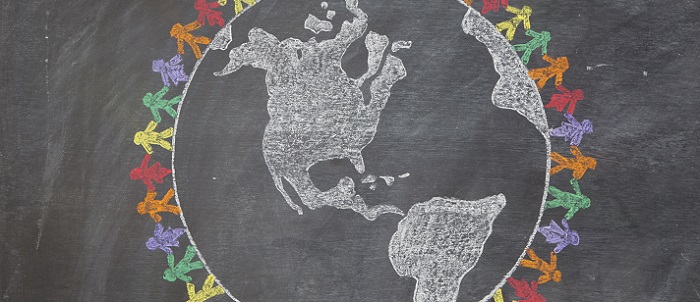By Daniel Sepulveda, Senior Vice President for Policy & Advocacy
A mob laid siege to the United States Capitol last week. They had a plan and a mission – threaten Congress into overturning a free and fair election. It was tragic and frightening. We hope legislators create a commission to investigate the event and its causes as they did with the 9/11 attack on the United States. The threat to American national security and democracy is no less insidious or dangerous because it is internal rather than external.
For our international colleagues and clients, we recognize that the purveyors of chaos are everywhere, disseminating misinformation and disinformation to fuel hate and violence. We further recognize that advertising supported media is global and that we must come together as an ecosystem to starve platforms and publishers that host misinformation of marketer spend for the safety and security of democracies and their people everywhere.
Failing to address and break the financing of misinformation and disinformation proliferated on the internet and across digital media threatens our ability to govern ourselves, global stability, and the future of the internet as a force for the democratization of legitimate commerce and civil discourse. We can and must all play a part in the solution.
MediaMath can help your brand spending to avoid being part of the problem. We have been thinking about this for two years and working on solutions, as well as advocating for greater attention to the challenge. After multiple civil rights organizations initiated the Stop Hate for Profit movement and successfully encouraged multiple global advertisers to pause advertising spend on Facebook, we worked to ensure that our pipes presented an alternative for advertisers to choose to ensure that their dollars were not financing hate. Given recent events, we want to bring this work to your attention.
MediaMath Platform Wide Protection with the Global Disinformation Index (GDI)
It’s well documented that disinformation campaigns have run rampant on Facebook and other social media platforms. But the open web is also vulnerable to content that destabilizes democracies and harms the social good. As a result, major brands unknowingly monetize disinformation content and publishers through the programmatic ecosystem at a staggering scale — an estimated $250 million dollars annually according to a 2019 GDI study.
In response to the challenge, MediaMath has partnered with Global Disinformation Index (GDI), a non-profit organization that leverages AI and intelligence gathering to identify disinformation on the open web. With a tech-driven approach that removes human subjectivity from analysis and more than 100,000 domains in its system, GDI provides the SOURCE ecosystem with a scalable solution that automatically identifies inventory that appears alongside controversial and offensive content, such as anti-immigrant conspiracy theories and fake news surrounding COVID-19. More recently and at the root of the movement to engage in insurrection, misinformation and disinformation related to election fraud, white supremacy, and militia recruitment and mobilization have also risen to the top of our communal concerns.
Through this partnership, MediaMath becomes the first DSP to integrate with GDI to protect brands and agencies from disinformation sources and content across the open web.
Activating Newsguard on the MediaMath Platform
In addition to the baseline protections that GDI provides for clients across our platform, we also enable clients to activate NewsGuard to help them serve ads on credible news sources vetted by trained journalists while avoiding misinformation and disinformation. NewsGuard’s team of journalists’ rate news and information websites based on nine credibility and transparency criteria, ranging from whether or not the site repeatedly publishes false content to whether or not it discloses its ownership and financing. By applying the criteria equally to all sites, NewsGuard has been recognized for being apolitical by commentators from Slate to Fox News.
Finally, it is important to note that advertising within the news maintains or can even increase brand trust according to 84% of consumers in an IAB study. Access to NewsGuard is available directly in MediaMath through our Peer39 integration and gives advertisers the ability to maintain spend in news during critical moments with brand safety in mind and while ensuring they are financing only credible sources.
Next Steps
Almost all of the platforms and publishers that distributed misinformation and the tools that fed and organized this debacle is advertising supported.
All of us involved in the monetization of media, social or otherwise, have to investigate our role in that process and what we can do to starve hate of the content that fuels it. Beyond that, we need to invest in the needs of communities across America and ensure that they are heard, supported, and made capable of pursuing the American Dream. Some part of that includes ensuring that we finance healthy local and national news media subject to journalistic standards and transparency. We must also finance the voices of disenfranchised communities to enable them to tell their stories in order to inform our leaders about conditions on the ground far from centers of power. We can, as an ecosystem, do all of these things and we must.
Every day every marketer, every agency, every trader across the globe makes decisions about how their media dollars are being invested. Those investments have both immediate and direct effects as well as larger, external effects on the voices that are amplified, the stories that are told, and the businesses that succeed.
While it starts with your choice of media platform and channel mix, your active choices inside our platform makes a difference. Please take advantage of the tools we’ve introduced above. Become familiar with our Purpose Driven Advertising SOURCE partnerships in news and multicultural publishing – supporting the thousands of jobs and quality journalism that today’s digital advertising environment underweights – and in publications owned and amplifying the voices of women, people of color, the LBGTQ+ community.
There are no painful trade-offs: doing what is right in the world comes typically at no cost to business KPIs, and in many cases delivers improvements by reaching engaged audiences on underfunded media. It also serves your brand goals across corporate social responsibility and diversity and inclusion efforts. Ask your account team for relevant case studies to support any internal business case necessary to put a spotlight on these issues and drive change inside your organization.
If – when – our clients take action we can shift billions of media investment away from the bad and toward the good. It’s time.
Thank you.








 As Director, Industry Content & Training, at MediaMath, Debbie has a passion for education and learning. Debbie spearheads the industry content roadmap for NMI and curates net new content to help others understand what can sometimes be a confusing landscape. In her spare time, she is raising three small digital natives who often influence the content she drives.
As Director, Industry Content & Training, at MediaMath, Debbie has a passion for education and learning. Debbie spearheads the industry content roadmap for NMI and curates net new content to help others understand what can sometimes be a confusing landscape. In her spare time, she is raising three small digital natives who often influence the content she drives. Cassie Albee is a Sr. Manager of Product Marketing working closely with the Product team to launch audience, data and identity products that are integrated into every part of MediaMath’s technology stack. She focuses primarily on positioning and communicating the value of these products and how they make the marketer’s and agency’s job easier. Cassie lives in New York City, but originally hails from Massachusetts. As such, she is a die-hard Patriots fan, despite the heckling she receives on a daily basis.
Cassie Albee is a Sr. Manager of Product Marketing working closely with the Product team to launch audience, data and identity products that are integrated into every part of MediaMath’s technology stack. She focuses primarily on positioning and communicating the value of these products and how they make the marketer’s and agency’s job easier. Cassie lives in New York City, but originally hails from Massachusetts. As such, she is a die-hard Patriots fan, despite the heckling she receives on a daily basis.


